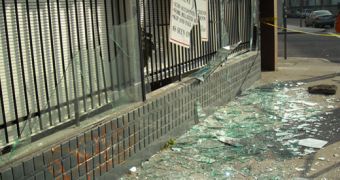Statistics experts have noticed for quite some time that even sprawling metropolises tend to exhibit crime hot spots, as in areas where offenses clump together. This doesn't make sense theoretically, as burglars and other criminals exploiting an area that has not been “touched” before stand to gain the most from it. But researchers say that, even in large cities, crime begets crime, and that a wave of criminal activity in a certain neighborhood for some reason attracts other activities of the same sort in the same area.
The new conclusions are based on a mathematical model of burglars, which was recently presented in San Diego, at the annual meeting of the American Association for the Advancement of Science (AAAS). Investigating precisely how these clumps of criminal activities form could in the end allow law enforcement agencies to break them up, and restore order in some of the most dangerous neighborhoods in any country. Scientists suggest that many thieves could for instance be attracted by the sight of broken glass from past burglaries, or by increased amounts of graffiti on walls. This could indicate for them that the area has homes which are easier to break into, and also that the inhabitants are not very vigilant about their properties.
The new study was based on statistical data collected from the police departments in Los Angeles, and Long Beach, in California. Researchers at the University of California in Los Angeles (UCLA), led by mathematician Andrea Bertozzi, centralized the datasets into a model, that also included “traveling” burglars, who don't operate within the same area at all times. This category is the most likely to be attracted by signs left behind by previous criminals in a certain neighborhood. As more thieves flock to the same area, a new hot spot is formed, ScienceNow reports.
But the model also revealed some worrying information about the effect police forces had on these clumps. The datasets showed that even increased police presence around a very large crime clump did not annihilate it. Rather, criminals migrate to a new area, where they create the same hot spot again. The crime spree cannot be eradicated completely via this method, which suggests that authorities should find new means of fighting the crooks on their own turf. Details of the investigation appear in the February 22 issue of the respected journal Proceedings of the National Academy of Sciences (PNAS).

 14 DAY TRIAL //
14 DAY TRIAL //